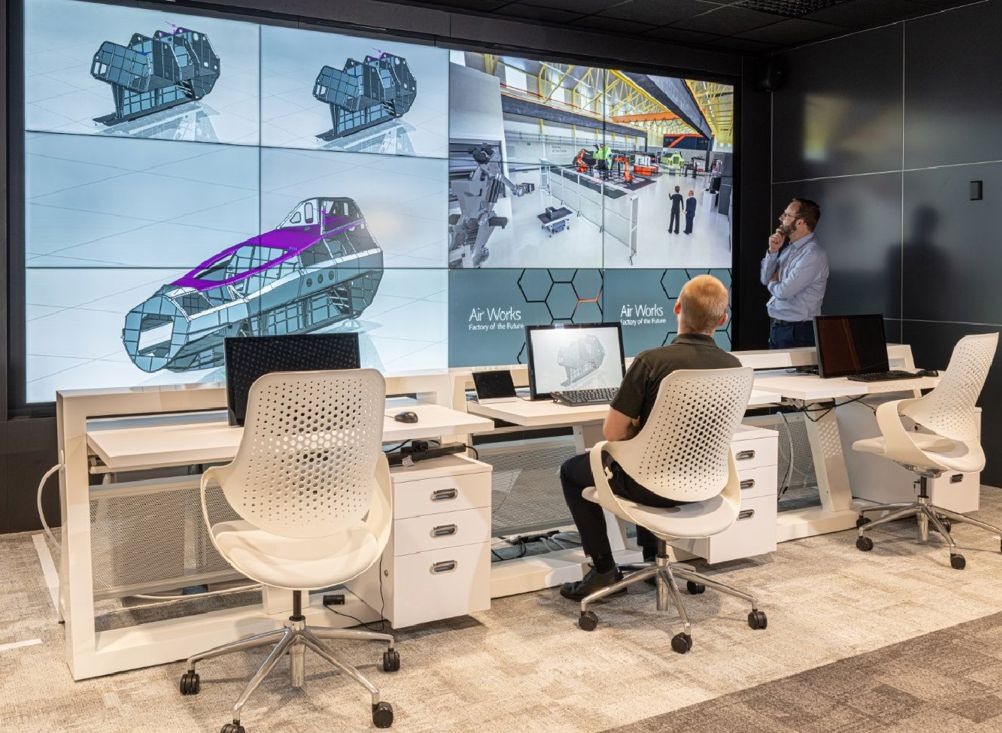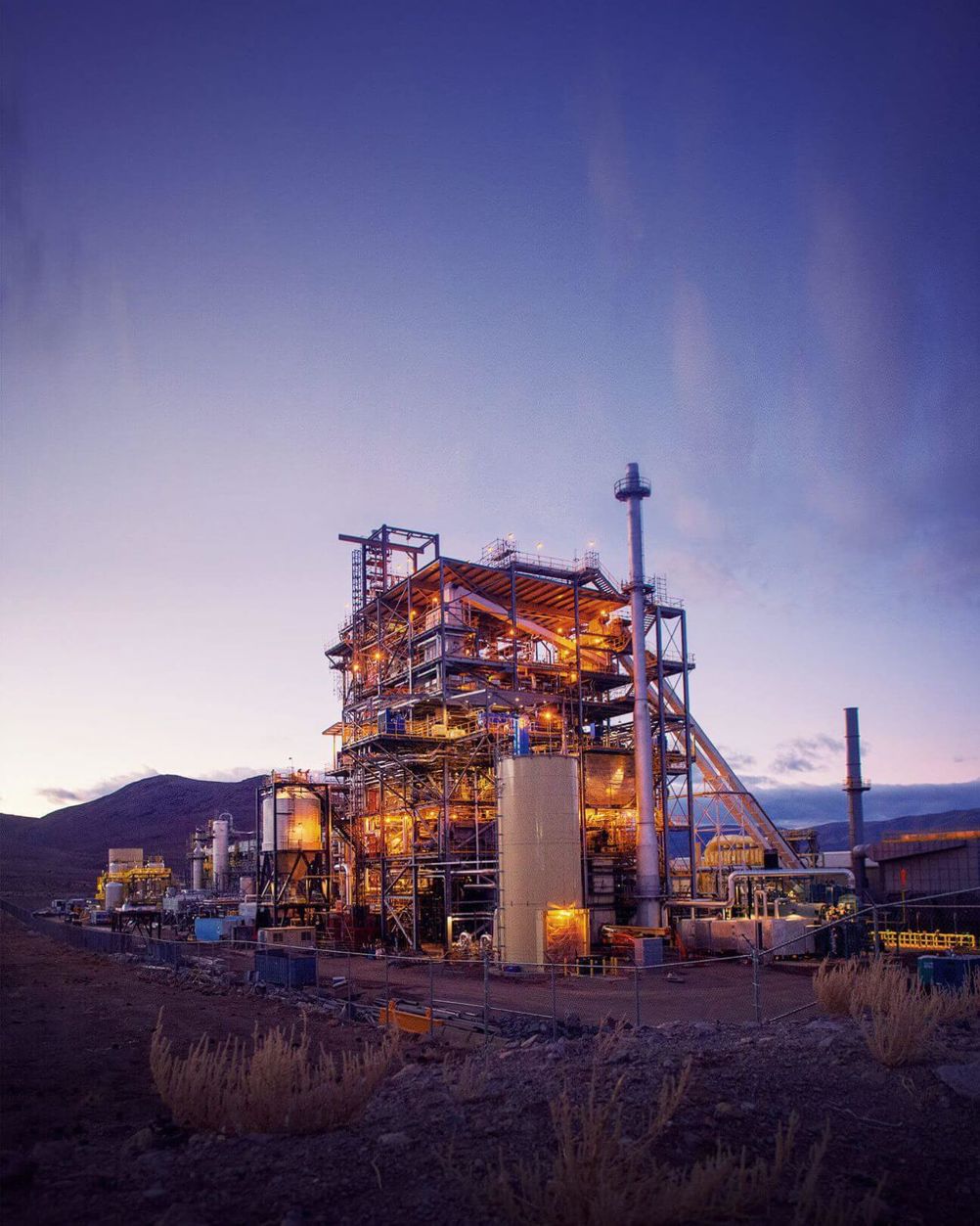The North West of England has been a powerhouse of industry and global trade for almost 200 years. A region synonymous with entrepreneurship, invention and ‘hard graft, the North West is the birthplace of engineering marvels such as the spinning jenny, the programmable computer, graphene and polyethylene. Indeed, the assembly line at the Bridgewater Foundry in Salford is the blueprint for how factories are laid out centuries later.
The region may have lost its position as the historic centre of world textiles production, but the North West has built an equal reputation in aerospace. Today, the North West aerospace cluster is one of the largest in Europe and sits at the vanguard of nearly all major aviation advancements, from lightweighting and green fuels to next-gen fighter jets, drones and cutting-edge production methods.
“Places like Lancashire and Manchester were the engine room of the Industrial Revolution which changed the face of the UK economy forever,” said Ian Muldowney, Chief Operating Officer for BAE Systems Air.
“From a bedrock of highly-skilled people and companies, the North West region has evolved technical expertise and specialist sectors, making it a melting pot for innovation. Having been central to the Industrial Revolution, the North West has an opportunity to play a pivotal role in driving forward the digital revolution.”
Grasping that opportunity is made easier thanks to the region’s diverse and thriving innovation ecosystem that brings together the big names of aerospace with SMEs, start-ups, more than a dozen universities, a rapidly expanding network of advanced manufacturing clusters and a plethora of industry-led, government-backed initiatives.
“Innovation, above all else, will enable us to grasp the many opportunities at hand, overcome the challenges and maintain and grow the North West’s leading position and that of the UK,” said Mandy Ridyard, Financial Director of high precision engineering firm and North West Aerospace Alliance member, Produmax.
Demand outstripping capacity
The challenges facing aerospace in the North West, namely, net zero, skills and supply chain capacity, are by no means unique. Yet the region’s dominance in aerospace left it more exposed than most to the global grounding of aircraft during the pandemic. The impact of which continues to rock the sector.
On the surface, civil aerospace looks to have recovered from the historic lows seen at the height of the pandemic. Following a challenging 2022, the year closed with global orders for new aircraft at their highest since 2015. The current backlog of nearly 13,500 aircraft represents seven years’ worth of work and thought to be worth more than £200bn to the UK economy. Russia’s invasion of Ukraine has also galvanised support to boost UK defence spending.
While welcome news for suppliers, the need to rapidly ramp up production highlights how the supply base has contracted of late. As the adage goes, ramping up is harder than ramping down.
“We’ve gone through the most torrid of times and, having come out the other side, there are noticeably fewer civil players in the marketplace today,” commented Ridyard. “Some have gone completely; others have diversified into other areas of aerospace or similarly advanced sectors like nuclear or medical.
“Pre-pandemic, we were primarily wide-body civil aerospace; the worst place to be as the last market to recover is long-haul. During the pandemic, we went from 4 per cent non-aerospace to around 25 per cent. We’ve now settled at around 7 per cent. Also, we’ve gone from four blue-chip customers to more than a dozen and diversified the number of platforms we supply to.”
High barriers to entry, particularly regulatory, mean additional capacity will most likely come via established suppliers investing in new skills, technology and equipment to improve productivity. However, record inflation, energy and business costs make realising these investments much harder, especially for SMEs.
Factory of the Future
BAE Systems manages complex projects that rely on a healthy, agile and vibrant supply base, a significant share of which are in the North West. Unsurprising given it hosts BAE Systems’ three largest sites – Barrow-in-Furness (Marine), Cumbria, and Samlesbury and Warton (both Air), Lancashire.
All are currently involved in major manufacturing programmes that have collaboration with suppliers and partners at their core. A shining example of that ethos in action is the ambitious Tempest programme, one of the UK’s largest-ever engineering and technology endeavours and intended to replace the Eurofighter Typhoon by the mid-2030s.
“Tempest represents the future of the UK’s sovereign combat air industrial capability, sustaining critical skills and high-value jobs that are underpinned today by the Typhoon programme,” Muldowney commented.
“This is a long-term, international project that will deliver value for decades, supporting a predicted 21,000 jobs each year, with the North West reaping the most rewards. But most importantly, Tempest is a complete step change in combat air capability and therefore challenges us to think differently.

“We’ve created a Factory of the Future at our site in Warton to demonstrate the advanced manufacturing technologies which are central to delivering Tempest at pace. We are collaborating with 50 businesses and SMEs, several based in the North West, to inject the best of UK innovation into our facility.”
The digitally-connected Factory of the Future aims to deliver a step-change in the speed, precision and cost of manufacturing complex military aircraft. One example demonstrated is the new approach to how humans and machines can operate together.
Flexible robotic and ‘cobotic’ technologies remove the need for heavy, fixed machinery and can quickly switch from the production of one item to another. Additionally, off-the-shelf robotic technology from the automotive industry has been modified to operate at the precise tolerances required for military aircraft.
Lessons from this pioneering project will likely be adopted and adapted across aerospace and other sectors and help to ensure the UK industry remains globally competitive. While the technology to do so is readily available, people are in somewhat shorter supply.
Levelling up in action
The UK aerospace sector currently has around 10,000 vacancies, a figure that has largely remained unchanged for the past 12 months.
“In an increasingly competitive world, securing the right people with the right skills is a challenge for every business in every industry, and BAE Systems is no exception,” said Muldowney. “It is a challenge we take seriously not just for our benefit but for the wider regional economy.”
Ninety per cent of aerospace jobs are outside of London and the South East, and average wages are almost a third higher than the UK average
Mandy Ridyard - Produmax
BAE Systems has a well-established careers development programme and spends almost £100m a year on skills and training with a keen emphasis on young people. Recently, it has taken this commitment a step further with the purchase of a number of properties within Barrow-in-Furness town centre. Following extensive refurbishment, the former retail units will become a multi-purpose facility with skills development as a key focus.
The regeneration of Barrow town centre is just one example of how aerospace makes the rather woolly concept of ‘levelling up’ a transformational reality. “The sector provides high value, high wage, high skill jobs spread across the whole country,” said Ridyard. “Ninety per cent of aerospace jobs are outside of London and the South East, and average wages are almost a third higher than the UK average.”
Muldowney agreed, adding that as aerospace continues to embrace more digital engineering capabilities, the sector needs to attract people from science, technology and digital sectors. This presents a challenge to ensure people understand the opportunity they have within the sector, but a real opportunity for the region as we draw more high-value skills to the it.”
BAE Systems Air is currently recruiting more than 1,000 people, most of them based in the North West. Promoting programmes such as Tempest is helping to attract people from within and to the region at the heart of this national endeavour, concluded Muldowney.
“Once those people are working in the sector, we have a responsibility to invest in them and create a workplace that inspires creativity and drives continuous innovation. If we can achieve this, I believe the North West will continue to attract and retain top talent, continuing its rich history of delivering excellence.”

Waste-to-fuel
Aerospace, like automotive, is facing intense pressure to identify and deliver the propulsion systems of the future. As with its land-based counterpart, the three leading options are electrification, hydrogen and biofuels. Debate continues to rage but the likely winner, at least in the short-term, will be SAF, according to Ridyard, who said the fact SAF doesn’t require changes to aircraft, engines or airport infrastructure makes it the most attractive early proposition. “I don’t believe we’ll see new variants and platforms beyond low-volume proofs-of-concept until the industry agrees on a scalable, sustainable and competitive green solution. That may be a while away. Until then, SAF may be the best interim option.” By making SAF a key pillar in its Jet Zero by 2050 strategy, the government appears to agree. Indeed, the Transport Select Committee recently described SAF as the “most viable option for the immediate reduction of aviation emissions.” Five projects have recently secured a share of £165m from the Department of Transport for the development of SAF production plants in the UK. One of the winners is the waste-to-SAF facility at Ellesmere Port, Cheshire being developed by Fulcrum BioEnergy. Construction is scheduled for 2025 and production is expected to commence in 2027. A full capacity, the plant will convert 600,000 tonnes of non-recyclable household waste – which would otherwise have been destined for incineration or landfill – into 100 million litres of SAF annually. Thanks to the strategic positioning of the plant, SAF is expected to be delivered directly to Manchester Airport using the existing jet fuel pipework infrastructure. This will see the airport become the first in the UK to feature such a dedicated supply method. At the same time, Manchester Airport recently unveiled plans to become the first UK airport with a direct supply of low-carbon hydrogen fuel, announcing a partnership with HyNet, a government-backed industrial decarbonisation project focused on the North West and North Wales.











Guest blog: exploring opportunities for hydrogen combustion engines
"We wouldn't need to pillage the environment for the rare metals for batteries, magnets, or catalisers". Batteries don't use rare...